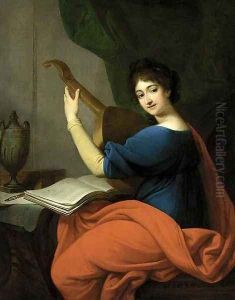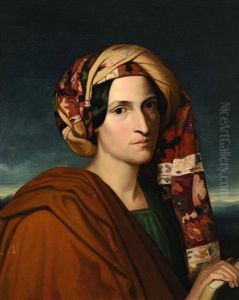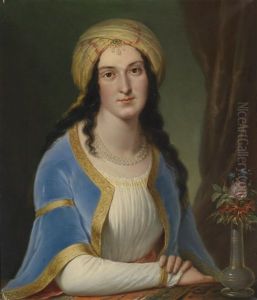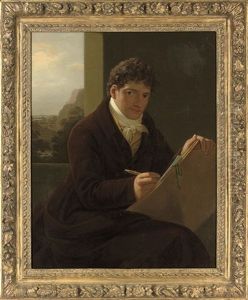Jozef Grassi Paintings
Jozef Grassi was an 18th-century painter and engraver primarily known for his work in the neoclassical style. He was born on June 22, 1757, in Vienna, Austria, into an artistic family. His initial artistic training took place under the guidance of his older brother, Anton Grassi, who was also a painter. Later, he attended the Academy of Fine Arts Vienna where he honed his skills and developed an affinity for neoclassical aesthetics.
Grassi's talent quickly became apparent, and he soon gained recognition for his portrait paintings, which were particularly valued for their elegance and clarity. In 1781, he moved to Italy to further his studies and was profoundly influenced by the works of the great Italian masters. During his time in Italy, Grassi became a part of the vibrant artistic scene and worked in various cities, including Rome, where he was influenced by the work of Anton Raphael Mengs, a prominent neoclassical painter of the time.
In the late 1780s, Grassi left Italy and moved to Dresden, Germany, where he became a court painter. His work during this period included both portraits and historical scenes. He became well-known for his precise technique and attention to detail, which was characteristic of the neoclassical movement that emphasized harmony, simplicity, and proportion. Grassi's portraits from this time are particularly notable for their sophisticated and refined style.
Throughout his career, Grassi also engaged in engraving, which allowed his works to reach a wider audience. His engravings were mostly reproductions of his paintings or works by other artists. Grassi's influence extended to his role as an educator, as he taught at the Dresden Academy of Fine Arts and helped shape the next generation of European artists.
Jozef Grassi's contributions to neoclassical art were significant. His emphasis on classical ideals, combined with a personal style that blended grace and psychological insight, made his portraits sought after by the European elite. Grassi continued to work and teach until his later years. He passed away on December 7, 1838, in Dresden. Today, his works can be found in various museums and collections throughout Europe, serving as a testament to his skill and the enduring appeal of neoclassical art.



